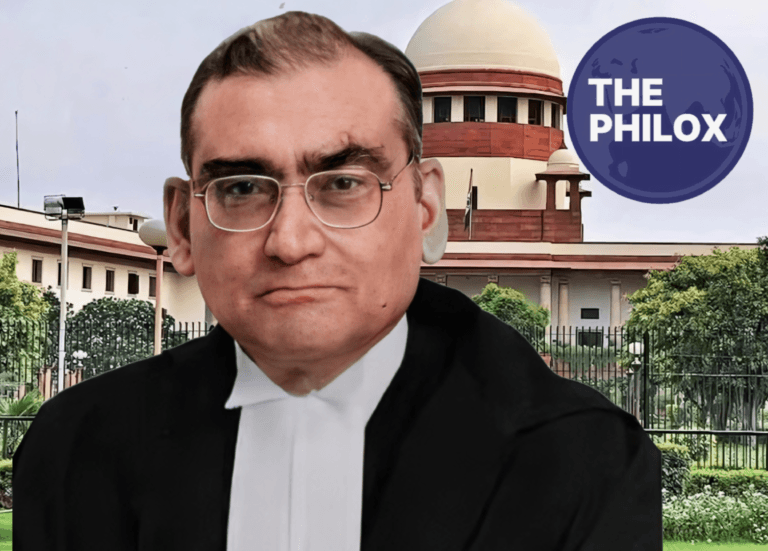
Few names in the great theater of India’s economic climb attract as much attention as Gautam Adani. His empire, a multinational juggernaut spanning crucial industries including infrastructure, energy, and logistics, is changing the economic shape of the country.
Often in contrast to India’s own development path, his explosive ascent is evidence of the transforming power of capitalism. Underneath the glittering veneer of his financial empire, however, is a tapestry stitched with lofty humanitarian pledges—lavish undertakings meant to uplifting millions but often fade into the shadow of doubt and unmet expectations.
₹60,000 Crore for India’s Future Grand Pledge
Adani made a startling declaration in June 2022—a philanthropic endowment of ₹60,000 crore—as he commemorated his 60th birthday and the centenary of his late father.
This, he declared, would be focused on the most urgent areas for India: skill development, education, and healthcare. The scope of the dedication made it one of the biggest gifts given in Indian history.
The announcement generated great respect and waves across several media sources. While television channels created vivid images of rural clinics equipped with modern facilities, schools with contemporary classrooms, and skill centers that would empower India’s young for the jobs of tomorrow, newspapers carried headlines heralding a new dawn for India’s social infrastructure.
The promise was more than just a gift; it was a vision aimed at tackling the long-standing systematic inequality afflicting the nation.
But the next few months did not show the expected great change. Though there was great grandiose promise, the ground showed little obvious change.
Hospitals in rural locations still battled shortages of doctors, beds, and basic medications. Schools stayed underfunded while battling antiquated instructional strategies and damaged infrastructure. Millions of aspirant workers are caught in a cycle of unemployment and underemployment while the promised revolution in skill development never materialized.
Expected to be a catalyst for transforming change, the ₹60,000 crore remained an illusive figure—often quoted but never completely realized.
Another promise: ₹2,000 crore for top-notch universities.
By February 2025, the Adani company once more made another charitable pledge—this time, a ₹2,000 crore project to set 20 world-class institutions in alliance with GEMS Education.
Promising to make great education available to all, the first institution was slated to open in Lucknow for the 2025-26 academic year.
Once more, the media was ablaze with coverage of Adani as a visionary philanthropist committed to determining the course of India.
News anchors spoke about how this program may close the disparity between rich and impoverished pupils so guaranteeing that excellent education becomes a right rather than a luxury.
Still, doubt loomed big. The public still felt the echoes of the past ₹60,000 crore pledge fresh. Should such a massive commitment have failed to produce significant outcomes, what assurance existed that this fresh ₹2,000 crore project would bear success? Would these universities remain privileged institutions serving mostly the rich, or would they really be open to all?
The function of media: a handy narrative?
Media channels like NDTV and The Quint, both of which have since come under Adani’s corporate control, are essential in the spread of these charitable pledges.
Public opinion is greatly shaped by these venues, and their coverage of Adani’s charitable activities usually veers toward great respect rather than critical examination.
Although the corporate media machinery guarantees broad attention for every announcement, tracking the actual execution of these claims reveals seldom the same excitement.
There are little reports on the development—or lack thereof—of these programs, therefore leaving the public with great expectations but no proof of their realization. This begs a significant issue: Are these pledges sincere acts of charity or clever public relations tactics meant to support Adani’s business image while deflecting focus from broken pledges?
The Price of Notful Promises
The consequences of these broken pledges affect society directly, going much beyond business reputation. The lack of execution of these great promises influences the same industries they claim to improve:
1. Sector of Healthcare Continues to Suffers
India’s healthcare system still strains rural communities especially greatly. By establishing new hospitals, modernizing already-existing infrastructure, and guaranteeing the availability of medical experts, the projected investment may have helped to some extent to solve these problems.
Millions of people still lack sufficient medical treatment, nevertheless, from packed wards, understaffed hospitals, and shortages of basic drugs.
2. Education Crisis Unresolved
Though increased investments in education offer great promise, government schools all throughout India still need basic facilities. Many classes are still packed, textbooks are still rare, and teachers often work too much. Should the ₹60,000 crore pledge have been used strategically, the scene of Indian education may have changed dramatically. Rather, the gap between wealthy private universities and underfunded public ones keeps getting wider.
3. Development of Skills: Lost Possibilities
Although India’s workforce is one of its main advantages, the lack of easily available programs for skill development keeps socioeconomic advancement hampered.
The promised money might have supported extensive training programs, therefore generating millions of job prospects. Without any visible effort, however, young aspirants stay caught in cycles of doubt without the means to compete in a changing employment market.
Public Trust: A Weak Commodity
Every broken promise undermines public confidence and fuels rising mistrust of charitable projects declared by business leaders. While billionaires all around donate—some with clear results—Adani’s pledges sometimes appear to vanish into uncertainty.
The legitimacy of these initiatives is called into question by the great disparity between the grandeur of his corporate empire and the absence of obvious social influence.
Moreover, when billionaires make such pronouncements, they are influencing public opinion, political goodwill, regulatory scrutiny, and not only acting in charity. A well-timed charitable donation can help a company empire keep its gloss despite more fundamental problems by changing the story away from disputes, legal challenges, or financial crisis.
Demand openness and responsibility here.
Transparency and responsibility have to be first priorities if charity is to be really successful. Grand pledges should be followed with explicit execution roadmaps, timetables, and quantifiable benchmarks rather than only pronouncements worthy of headlines.
Public disclosures on cash allocation, project development, and impact evaluations should be easily available to guarantee that such pledges do not remain only rhetoric.
Independent media and watchdog groups also have to be more actively following these pledges. Independent reporters and civil society organizations are left to hold billionaires responsible for their charitable claims if corporate-owned media keeps providing uncritical coverage.
The thin line separating optics from generosity
Whether the ₹60,000 crore commitment of 2022 or the ₹2,000 crore school plan of 2025, Gautam Adani’s charitable promises have the power to change lives.
Still, pledges by themselves cannot bring about change; their execution does. The lack of obvious influence begs serious questions regarding whether these declarations are sincere acts of charity or calculated actions meant to improve business reputation.
India’s richest people should not just promise but actively contribute as it keeps on its path toward social and economic development.
The real test of generosity is not in the grandeur of its announcements but rather in the lives it affects, the communities it raises, and the legacy it leaves behind. Only time will determine if Adani’s pledges come to pass or vanish into the annals of broken promises.
Stay Connected and Share Your Stories
For all those inspired by stories of resilience and ambition, follow us on X/Twitter and on Instagram . For those with untold stories that you would love to share, please send them to contact@thephilox.com








